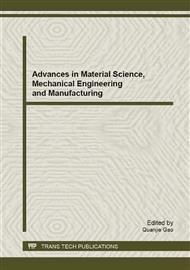p.248
p.253
p.258
p.262
p.269
p.273
p.278
p.283
p.288
Improvement in Mechanical Property of SiO2 Films Prepared by Sol-Gel
Abstract:
Silica films prepared by the base catalyzed sol–gel process show poor mechanical property. In this study, silica anti-reflective films with good mechanical property have been prepared by the catalyzed sol–gel process with dimethyl formamide added as drying control chemical additives. The silica sol was first dip deposited onto substrate to form films on both sides of the substrate and then subjected to thermal treatment. After thermal treatment, the film was achieved due to the formation of porous structure in the resultant film as a result of decomposing tetraethylorthosilicate and dimethyl formamide. Nano-indenter measurement shows that the Young’s modulus and hardness of base catalyzed films are 10-20GPa and 0.25-0.55GPa, respectively. But the films added with dimethyl formamide are much better than those films derived from base-catalyzed silica sols, the Young’s modulus and hardness are 32-39GPa and 1.22-1.47GPa, respectively. The good mechanical properties make such films potential in both military and civil applications.
Info:
Periodical:
Pages:
269-272
Citation:
Online since:
August 2013
Authors:
Keywords:
Price:
Сopyright:
© 2013 Trans Tech Publications Ltd. All Rights Reserved
Share:
Citation:


